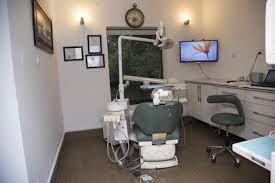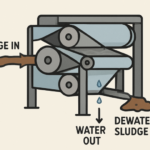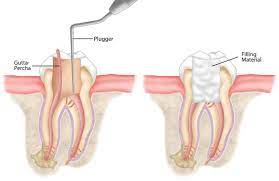Whose knees don’t quiver when the phrase Root Canal Treatment in Lahore is mention? The terms “pain” and “cost” come to mind while thinking about this situation. But how many of us are actually aware of what a “root canal” procedure is?
In dentistry, endodontic therapy, also known as root canal therapy, is a dental Root Canal Treatment in Lahore procedure that is use to eliminate infection from the interior of a tooth. It may also assist to protect the tooth from further infection in the future, if necessary. The procedure is Carrie out in the pulp of the tooth, which is know as the root canal.
What is root canal therapy and how does it work?
It is important to note that a “root canal” is not a treatment, but rather an integral part of a tooth. Nerve tissue, blood vessels, and other cells found in the pulp of a tooth, which is locate in the hollow region of the tooth.

A tooth is compose of two parts: the crown and the roots. In most cases, the crown is visible above the gum line, whereas the roots are visible below the gum line. The roots are responsible for attaching the tooth to the jawbone.
When a tooth is extract, the pulp found between the crown and the root, or inside the root canal. The pulp provides nutrition to the tooth and helps to keep the surrounding material moist. The nerves of the pulp are sensitive to hot and cold temperatures, and they interpret both as painful.
In dentistry, endodontic therapy refers to a dental operation that is typically referred to as a “root canal,” which is derive from the Greek word for “inside the tooth.”
The term “root canal” has, on the other hand, come to be frequently used to characterize the procedure.
What are the procedures to be follow?
One to three sessions are require to complete root canal therapy. Root canal therapy is perform in three parts.
Cleaning of the root canals
In the beginning, the dentist will remove everything from the root canal system. Dentists use extremely small files to remove damaged and dead pulp tissue from the inside of the tooth while administering local anesthesia to the area.
Filling of the root canal
The dentist will then use microscopic files and irrigation treatments to clean, shape, and disinfect the hollow area after it has been clean and prepared Root Canal Treatment in Lahore. An adhesive cement is use to completely seal the canals of the tooth after the rubber-like filling material has been applies.
After root canal therapy, the tooth is no longer alive. Because the nerve tissue and infection have been remove from the tooth, the patient will no longer be bother by pain in that particular tooth.
Placing a crown or filling in a tooth
The tooth, on the other hand, will be more delicate than it was earlier. A tooth lacking pulp must rely on the ligament that links the tooth to the bone to provide nutrients to the tooth. This supply is sufficient, but the tooth will become increasingly weak with time, necessitating the need of a crown or filling to give protection.
Until the crown or filling is complete, the patient should refrain from chewing or biting on the tooth. Following the placement of a crown or filling, the individual can resume normal use of the tooth.
Treatment is normally completed in a single visit, although curved canals, several canals, or large infections may take one or two further consultations.
What is the level of agony?
When people think of this type of treatment, they often imagine it to be painful. However, treatment given by a trained dental surgeon should be rather painless.
The infection, not the treatment, is the source of the discomfort that you are experiencing. Pain is not induced by the treatment; rather, it is relieve as a result of it.
Local anaesthesia will be administer by the dental surgeon to numb the tooth and surrounding area prior to performing the procedure to reduce pain.
Following therapy, it is normal to experience some soreness. It is just temporary, and over-the-counter (OTC) pain medicines may be sufficient to alleviate the discomfort. If prescription medications, such as codeine, are require, they can be obtain.
It is possible that a dentist will prescribe an antibiotic in order to treat or prevent an infection.
Who is in need of it?
A wound or disease in the pulp renders the tissue incapable of healing, resulting in its death.
If there is a deep cavity, a damaged tooth, or a loose filling, bacteria can enter the pulp and cause infection.
Bacteria will finally breakdown the pulp at the end of the process. If microorganisms gain access to the bone through the root openings, they may cause a bone infection to develop.
An infection will cause the bone to weaken and eventually break down. The ligaments that surround the tooth grow in size, causing the tooth to become loose.
The tooth becomes sensitive to both hot and cold temperatures as a result of pulp injury. Chewing can be painful, and some patients complain of persistent, throbbing anguish when chewing.
It is certain that the tooth will become loose and will need to be pull
Some people elect to have a tooth extracted, particularly if the pain is unbearable or the tooth cannot be save, as is the case when there is extensive decay, damage, or bone loss caused by periodontal, or gum, disease, for example.
The removal of a tooth, on the other hand, may cause the teeth around it to move and become crooked. Because of the appearance, it may be difficult to obtain a satisfying bite.
In the majority of situations, root canal therapy will save the tooth while also alleviating the discomfort.
If a tooth cannot be save, an implant is the next best thing to have done in its place.

When possible, saving a natural tooth is desirable because nothing performs as well as a natural tooth in terms of function and aesthetics.
How much does it set you back?
However, while the cost of dental care might vary substantially, the cost of conserving a tooth through root canal therapy is quite affordable.
Extractions are a last resort that typically result in a greater cost for an implant or bridge to replace the missing tooth.
It is also possible that extraction will result in malocclusion, which is crook teeth, as well as difficulty chewing.
Complications
With any surgical procedure, there is the possibility of complications. In a tooth with four root canals, a dentist may only find three of them, according to statistics. It is possible that the infection will extend to bone if only one canal left untreated.
In addition, the dentist must ensure that the filling substance penetrates far enough into the canal to completely fill the canal. If the root canal is not completely sealed, the infection has a chance to recur.
It is possible that the root of the tooth will split during the surgery, or that the instruments will break or perforate the canal during the procedure. As a result, it is more difficult to fill the tooth efficiently.
Occasionally, a specialist may be call in to attempt to resolve the problem and complete the root canal procedure.
Patients should constantly adhere to the dentist’s recommendations in order to avoid complications. If an antibiotic is prescribe, it is vital that the prescription is follow to the letter.
Root canal therapy is conclude by the installation of a permanent restoration, such as a crown, on the tooth Dentist in Lahore.
Prevention
In order to prevent infections, tooth decay, and gum disease, dentists recommend the following preventative measures:
Brushing and flossing teeth before going to bed and at least one more throughout the day
Brushing your teeth with fluoride-containing toothpaste
Maintaining good oral hygiene by using an adequate toothbrush and replacing it on a regular basis
Ensuring that you get regular dental examinations and cleanings
Brushing and flossing are recommend to clean between the teeth and to prevent plaque formation
staying away from sugary beverages and snacks, and eating a nutritious diet
Aside from preventing tooth decay, dental sealants can also aid to improve oral hygiene.













